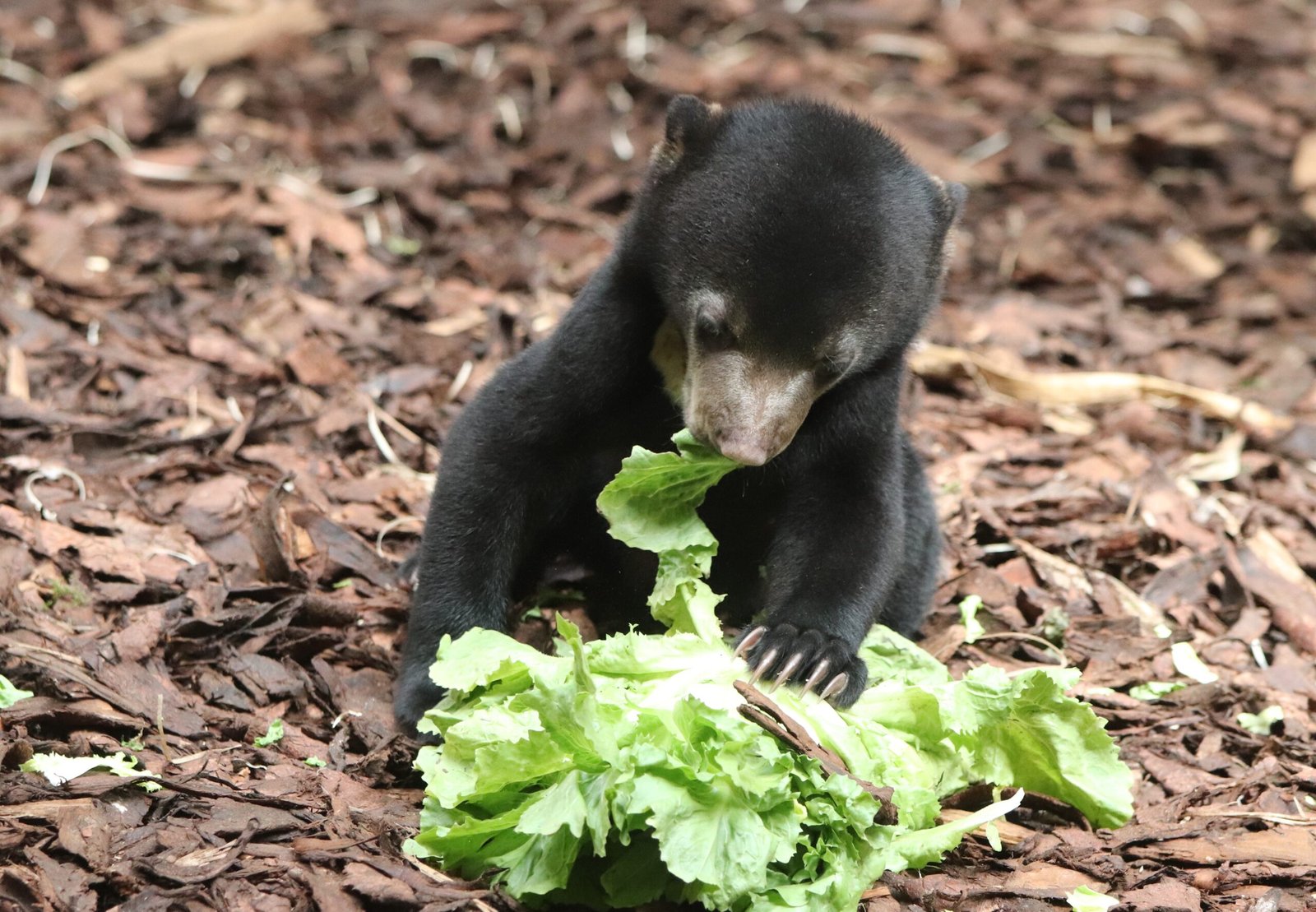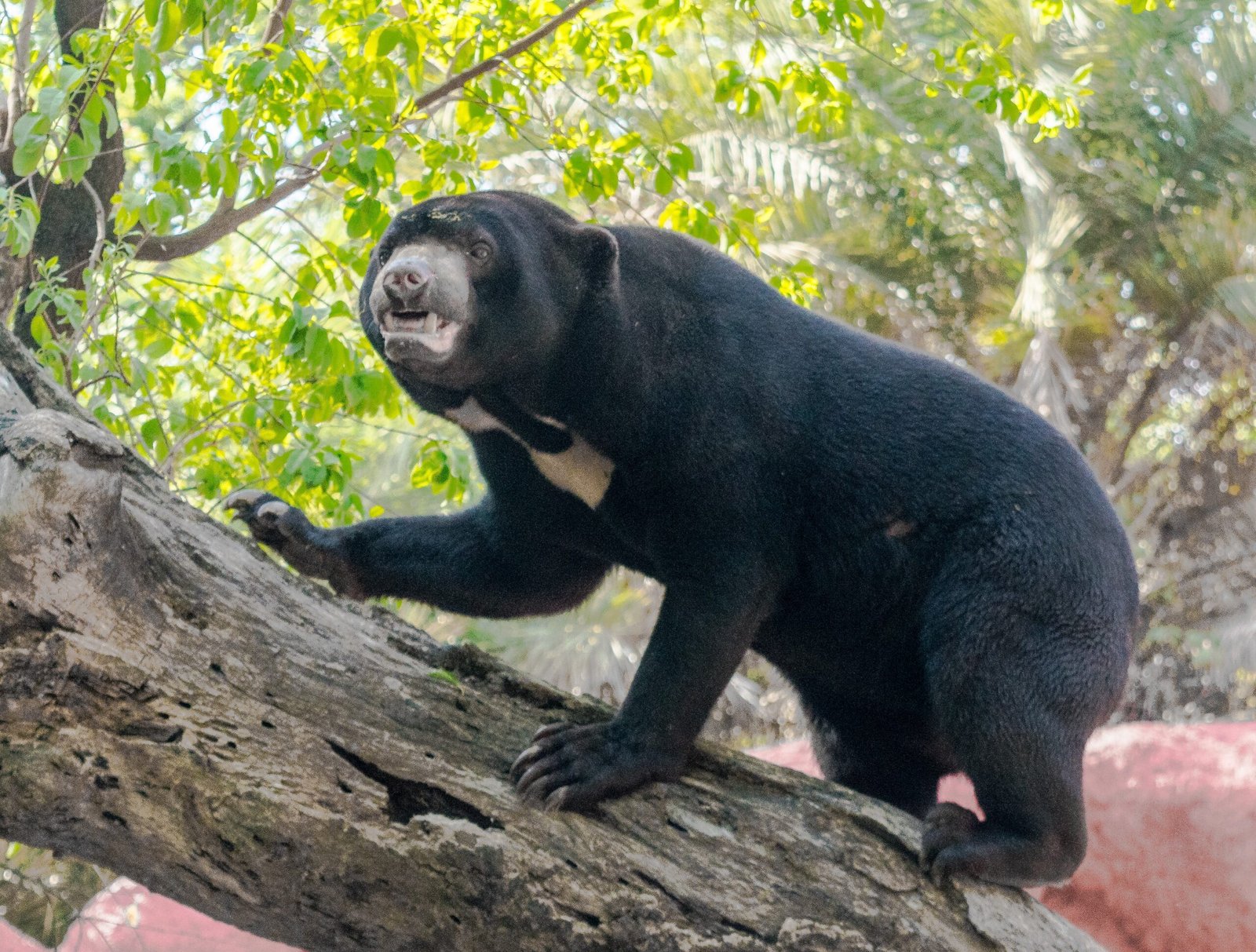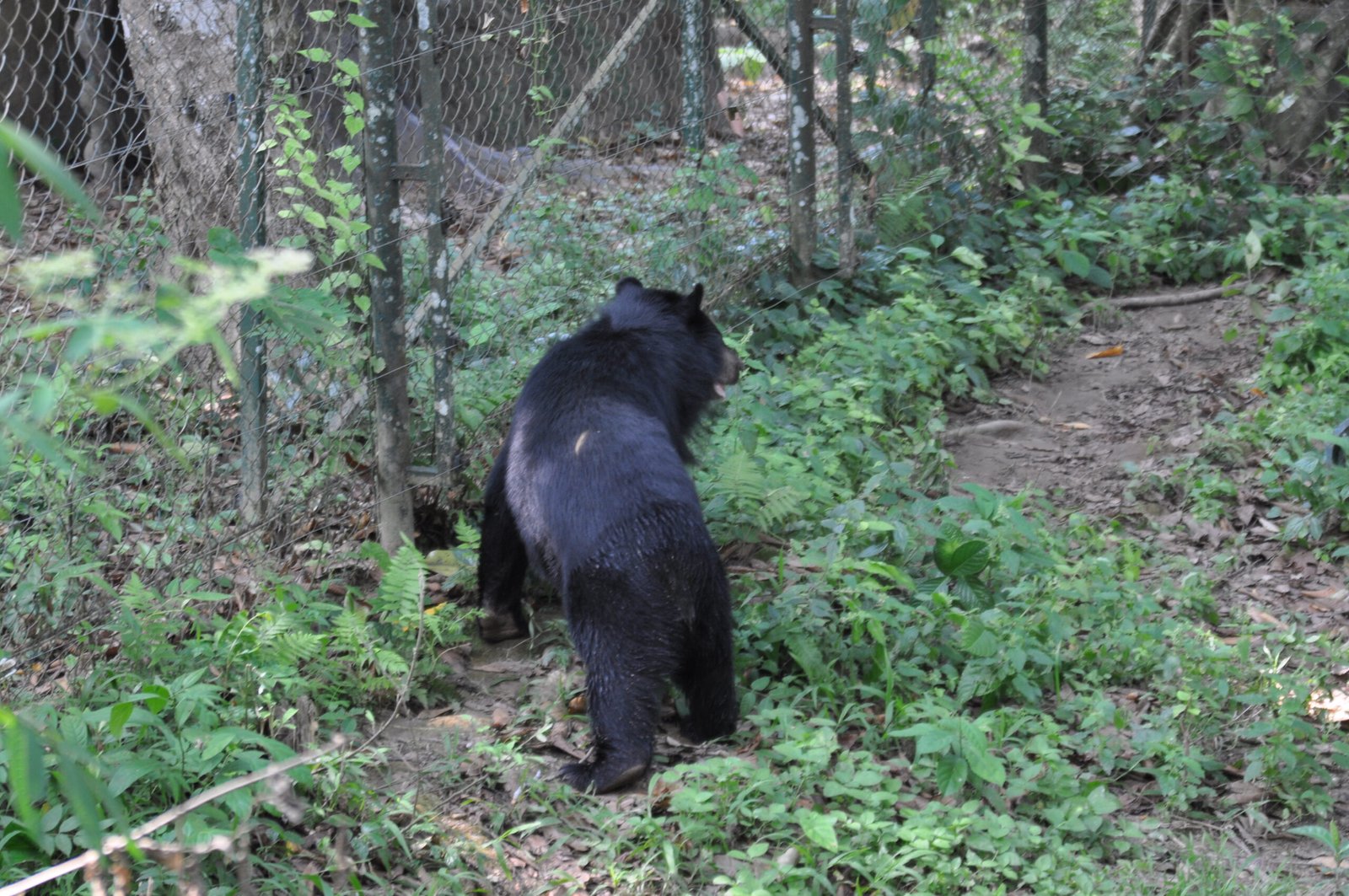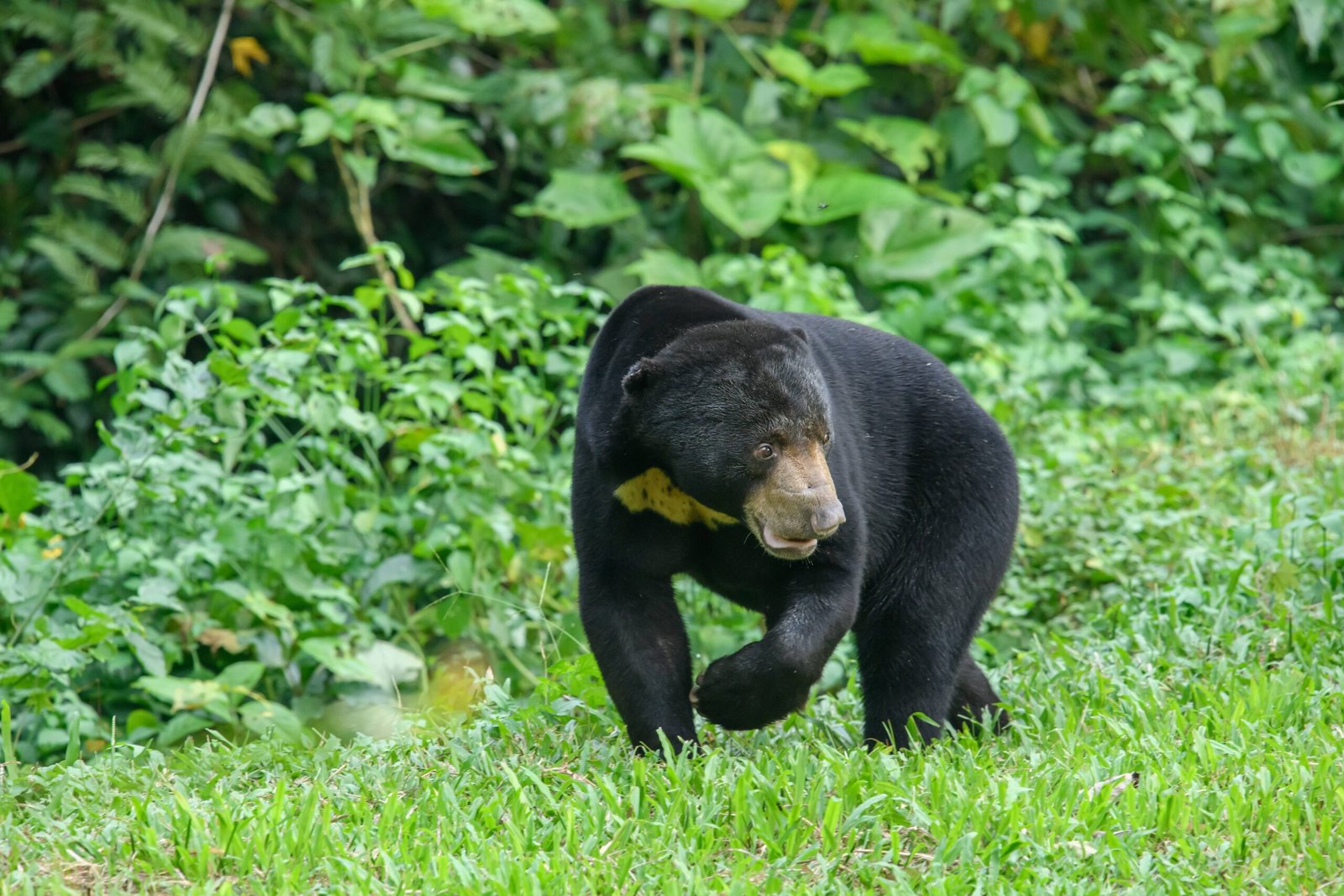Imagine wandering through the lush, tangled forests of Southeast Asia, sunlight flickering through a sea of emerald leaves—and there, almost hidden among the shadows, moves one of the region’s most mysterious and overlooked creatures. The sun bear, with its small stature and striking golden chest patch, is more than just an enigma; it’s a silent guardian of the rainforest. Yet, despite its crucial role in maintaining forest health, this remarkable animal teeters on the edge of being forgotten. How did the sun bear become Southeast Asia’s unsung hero, and what secrets does it hold within its dark, soulful eyes?
A Unique Bear in the Canopy
The sun bear, scientifically known as Helarctos malayanus, stands out among its bear relatives for several surprising reasons. Unlike the imposing grizzly or the iconic panda, the sun bear is the smallest member of the bear family. Adults often weigh less than a large dog, with males averaging around 60 kilograms and females even less. Their compact size and curved claws make them excellent climbers, so much so that they spend a large part of their lives in the trees. With their short, sleek black fur and the trademark crescent-shaped patch on their chest—a pattern as unique as a human fingerprint—sun bears are a true marvel of evolution.
Mysterious Origins and Ancient Lineages
Sun bears have roamed the forests of Southeast Asia for thousands of years, their lineage tracing back to ancient bear species. Fossil records suggest that their ancestors spread throughout Asia during the Pleistocene era, adapting over millennia to the dense, humid forests that now blanket the region. Their evolutionary journey has shaped them into agile survivors, perfectly suited for life in the treetops. Yet, despite their long history, much about the sun bear remains elusive, making them one of the least studied bear species on Earth.
Diet: Nature’s Opportunistic Feeder

Sun bears are omnivores with a taste for variety. Their powerful jaws and extraordinarily long tongues—reaching up to 25 centimeters—allow them to extract honey from beehives deep within tree trunks, earning them the nickname “honey bear.” But their diet doesn’t stop at honey; they feast on termites, beetles, fruit, and even small birds and rodents. This adaptability not only helps them survive in changing environments but also makes them important agents of seed dispersal and insect control, subtly shaping the forests they call home.
Role as the Rainforest’s Silent Gardener
Few people realize that sun bears are vital to the health of Southeast Asia’s rainforests. By tearing apart logs and digging in the soil for insects, they aerate the ground, allowing nutrients to cycle and new plants to take root. When they feast on fruits, they scatter seeds across vast distances, ensuring the regeneration of countless plant species. In this way, sun bears act as the forest’s silent gardeners, nurturing the very ecosystem that sustains them—and so many other creatures.
Habitat: A Vanishing Refuge

The sun bear’s world is shrinking at an alarming rate. Found primarily in the tropical forests of countries like Malaysia, Indonesia, Thailand, and Cambodia, their habitat is rapidly disappearing due to deforestation, agriculture, and illegal logging. Once sprawling, unbroken canopies now exist as fragmented patches, making it harder for sun bears to find food, mates, and safe shelter. This loss of habitat is a silent crisis, pushing these guardians ever closer to the brink.
Threats Beyond the Forest

Deforestation is only one of the many threats sun bears face. Poaching for their bile, which is used in traditional medicine, and the illegal pet trade are devastating their populations. Cubs are often stolen from the wild, their mothers killed in the process, to be sold as exotic pets or for their body parts. These brutal practices not only harm individual bears but also disrupt the delicate balance of the forest ecosystem they help maintain.
Elusive Behavior and Solitary Lives
Sun bears are notoriously difficult to observe in the wild. Unlike other bears that may form social bonds or live in groups, sun bears are solitary by nature. They roam their territories alone, marking trees with their claws and scent to communicate with others. This secretive behavior has made scientific study challenging, leaving many aspects of their lives—such as breeding habits and social structures—shrouded in mystery. Each rare encounter with a sun bear offers only a fleeting glimpse into their hidden world.
Remarkable Adaptations for Survival

Adaptation is the sun bear’s secret weapon. Their curved claws and strong forelimbs allow them to climb high into the canopy, escaping predators and foraging for food. Their keen sense of smell helps them locate everything from ripe fruit to insect nests hidden deep in decaying wood. Even their short, sleek coat is an adaptation, allowing them to stay cool in the hot, humid climate of the rainforest. Every aspect of their body tells a story of survival against the odds.
Reproduction: Nurturing the Next Generation

Sun bear cubs are born tiny and helpless, weighing less than a kilogram and blind at birth. Mothers care for their young in secluded nests high up in hollow trees or dense undergrowth, fiercely protecting them from danger. Cubs remain with their mothers for up to two years, learning essential skills like climbing, foraging, and avoiding threats. This long period of maternal care is crucial for survival, yet the loss of habitat puts increasing pressure on mothers struggling to raise their young safely.
Conservation Efforts and Glimmers of Hope

Despite their precarious situation, there is hope for the sun bear. Conservationists and local communities are working tirelessly to protect their remaining habitats, rescue injured or orphaned bears, and crack down on illegal trade. Sanctuaries across Southeast Asia provide a safe haven for rescued bears, offering a second chance at life. Education and awareness campaigns are slowly changing hearts and minds, inspiring people to see the sun bear as more than just a curiosity but as an invaluable part of the forest’s future.
The Irreplaceable Value of the Sun Bear

To lose the sun bear would be to lose a vital thread in the fabric of Southeast Asia’s rainforests. Their presence ensures that forests stay healthy, resilient, and alive. Every tree they climb, every log they break open, and every seed they scatter echoes their silent promise to the land. As we begin to understand the sun bear’s significance, the call to protect them grows stronger—a reminder that sometimes, the most important guardians are the ones we rarely see.



